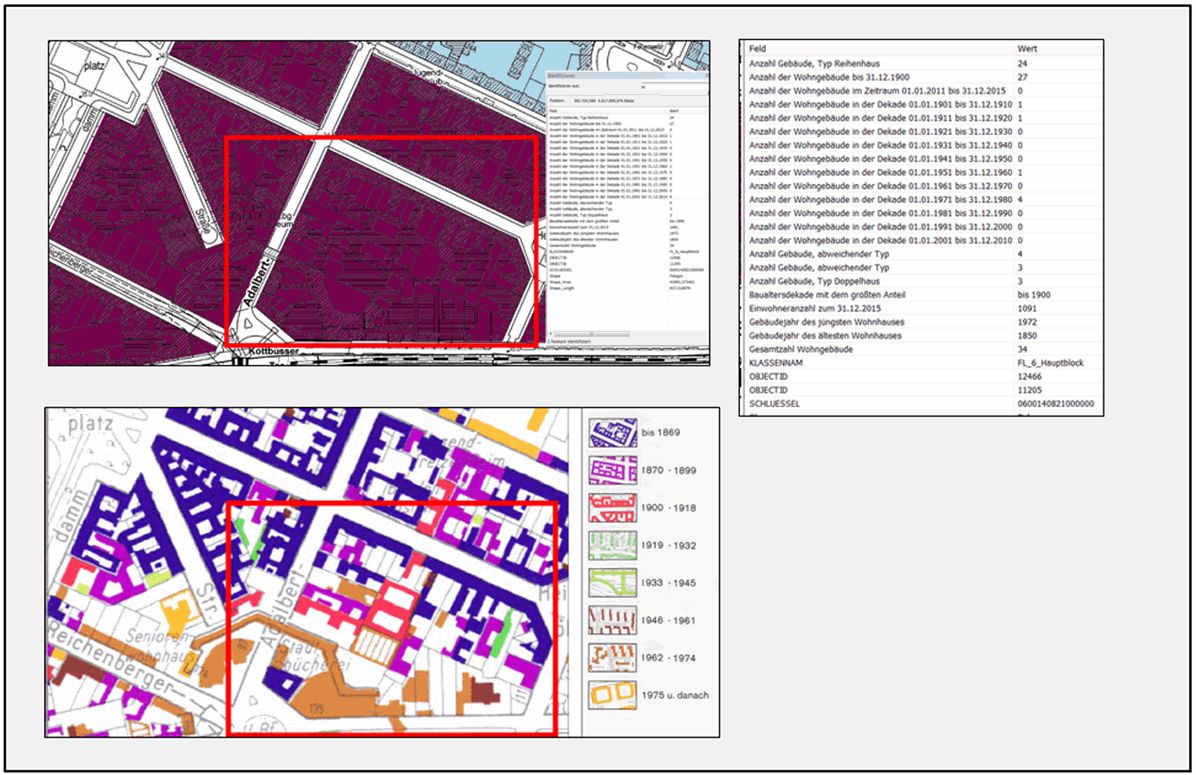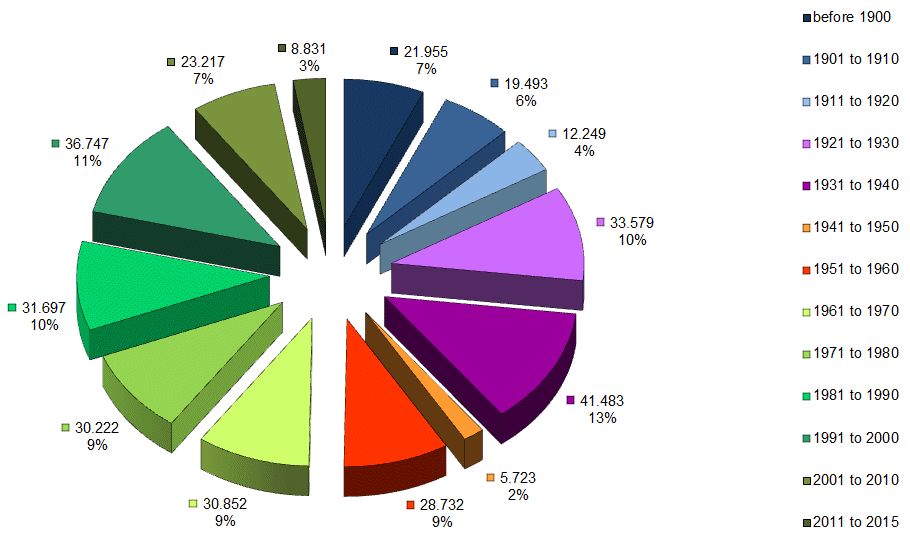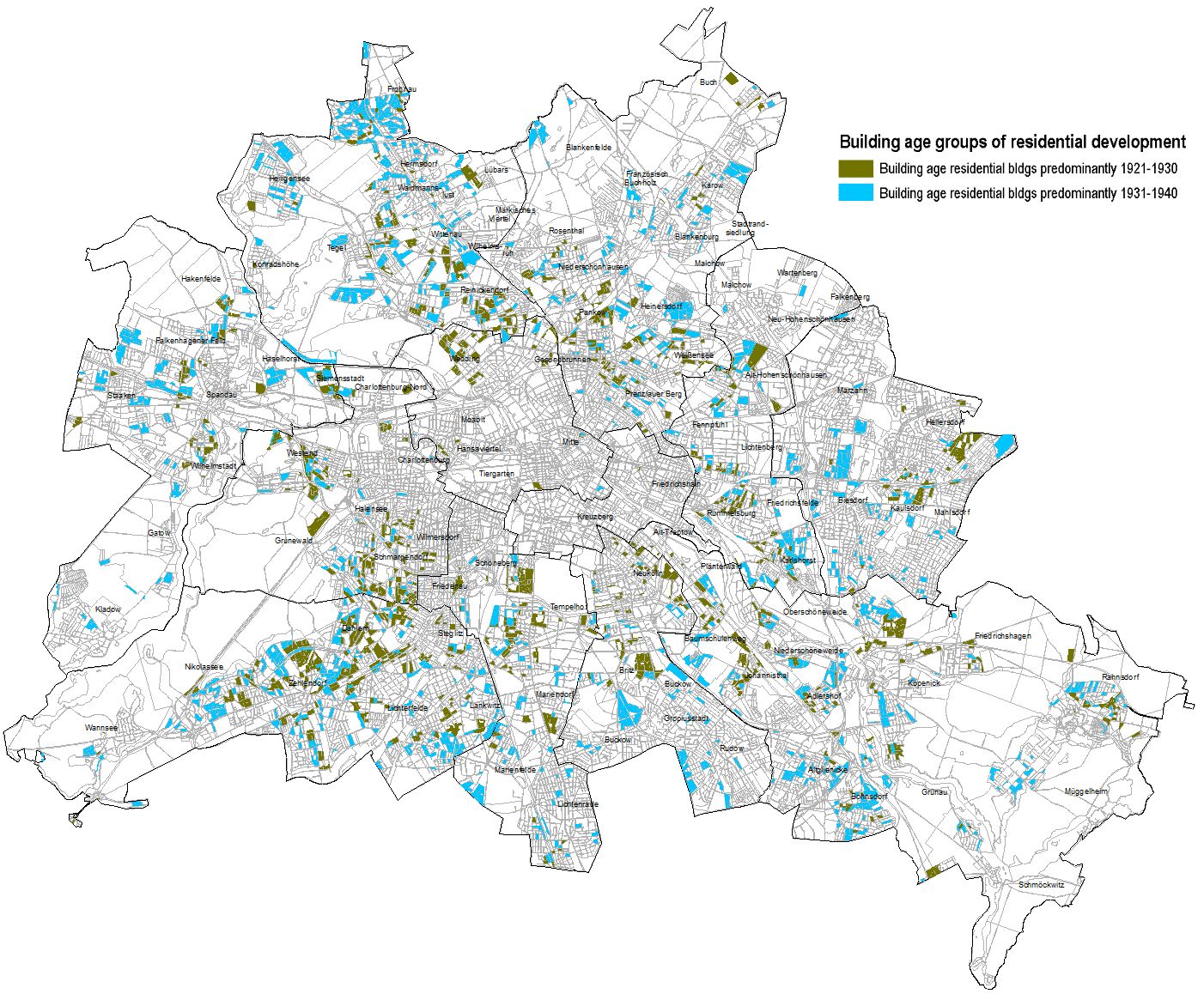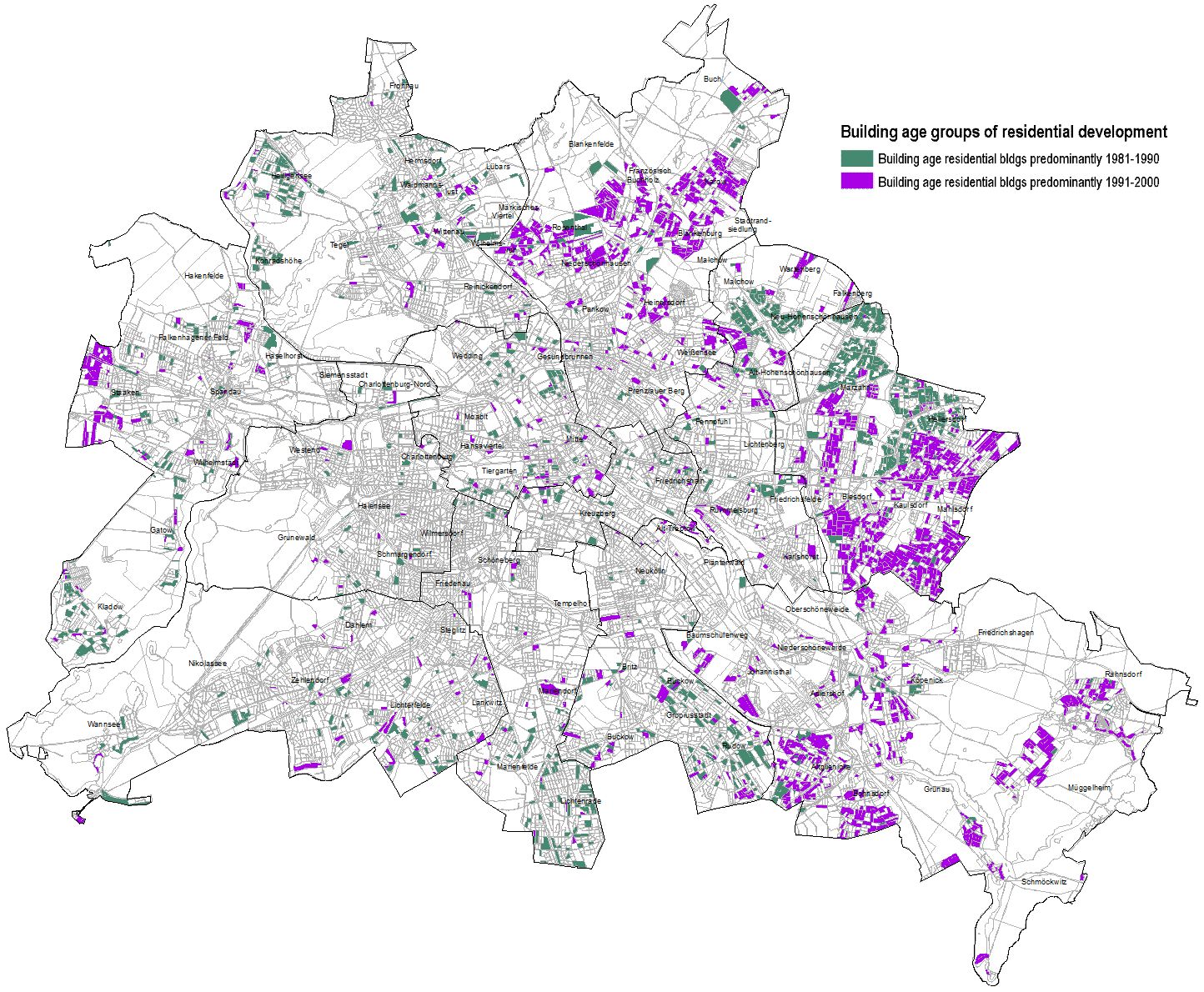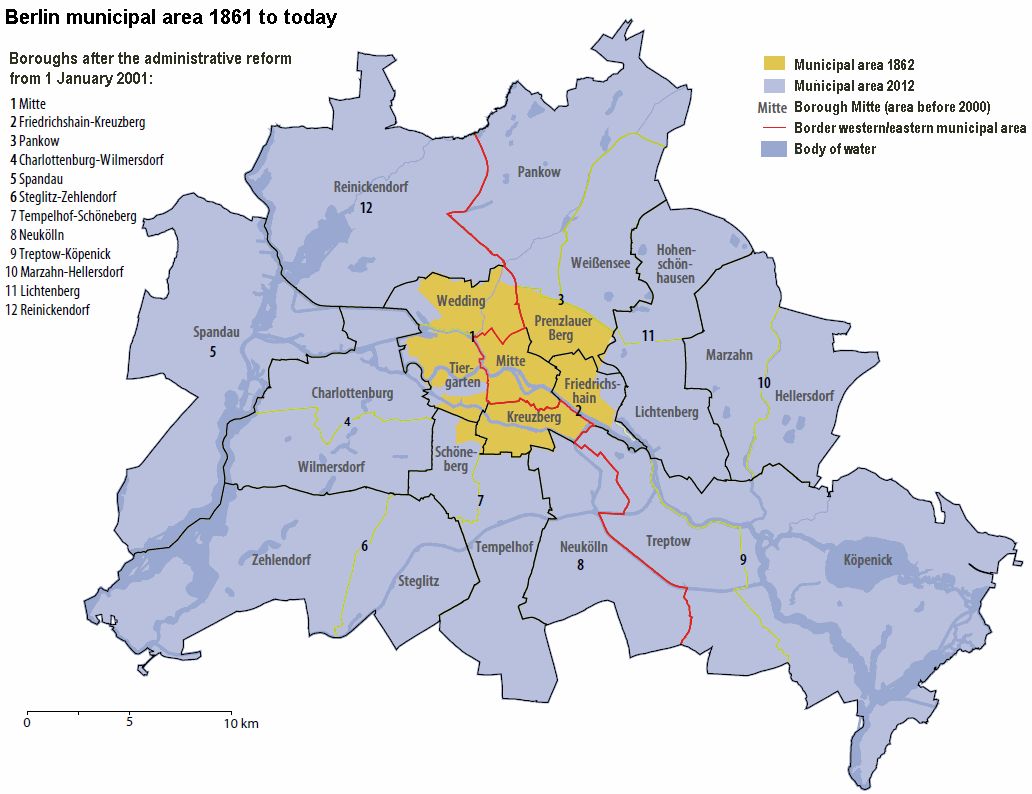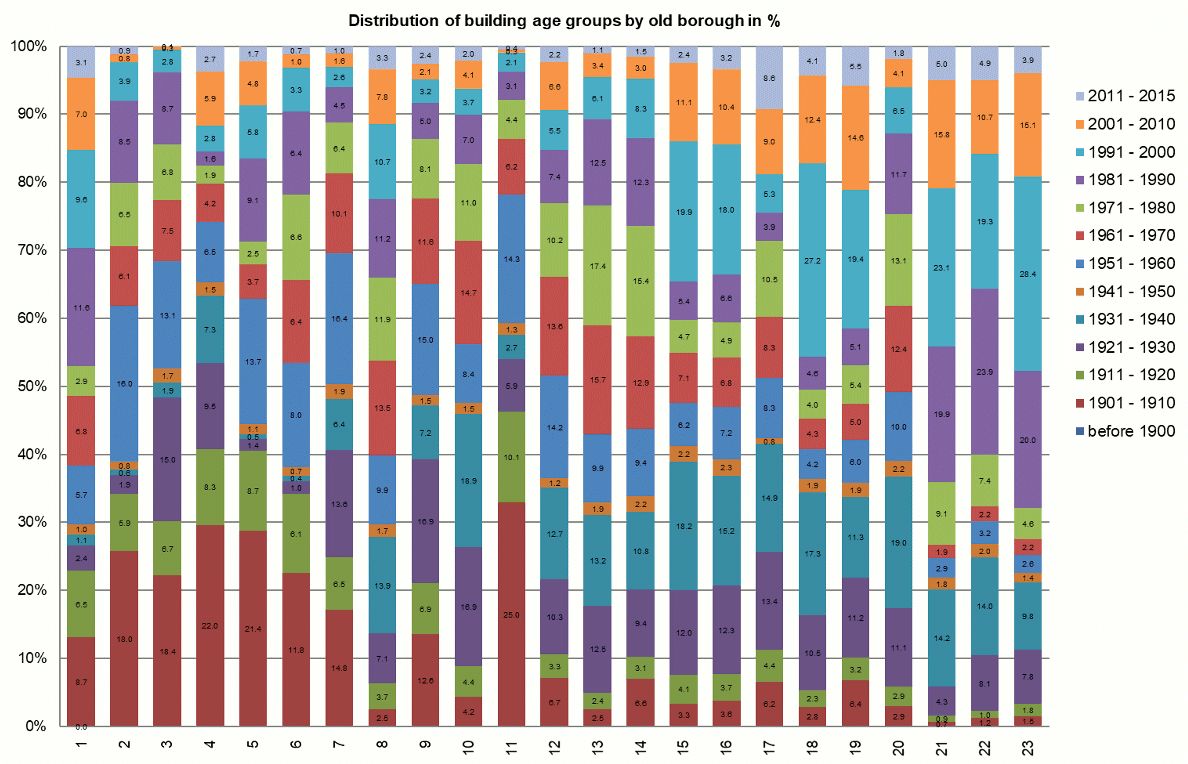The map provides a spatial and quantitative overview of construction activity in the area of residential construction for the decades presented.
Both the expansion of the city at the beginning of the last century and the areas of more extensive residential development since the reunification and in recent years (decades from 1991) may be clearly distinguished.
Due to the spatial focus on blocks and block segments and the representation of the predominant building age group, a generalization occurs naturally. Upon the inspection of closely limited sections, such as that of an individual block, it is possible that “fine structure” will not become visible. Focussing on the area north of “Kottbusser Tor”, the comparison of the above-mentioned record by Aust 1994 with the present map (cf. Fig. 1) shall serve as an example.

